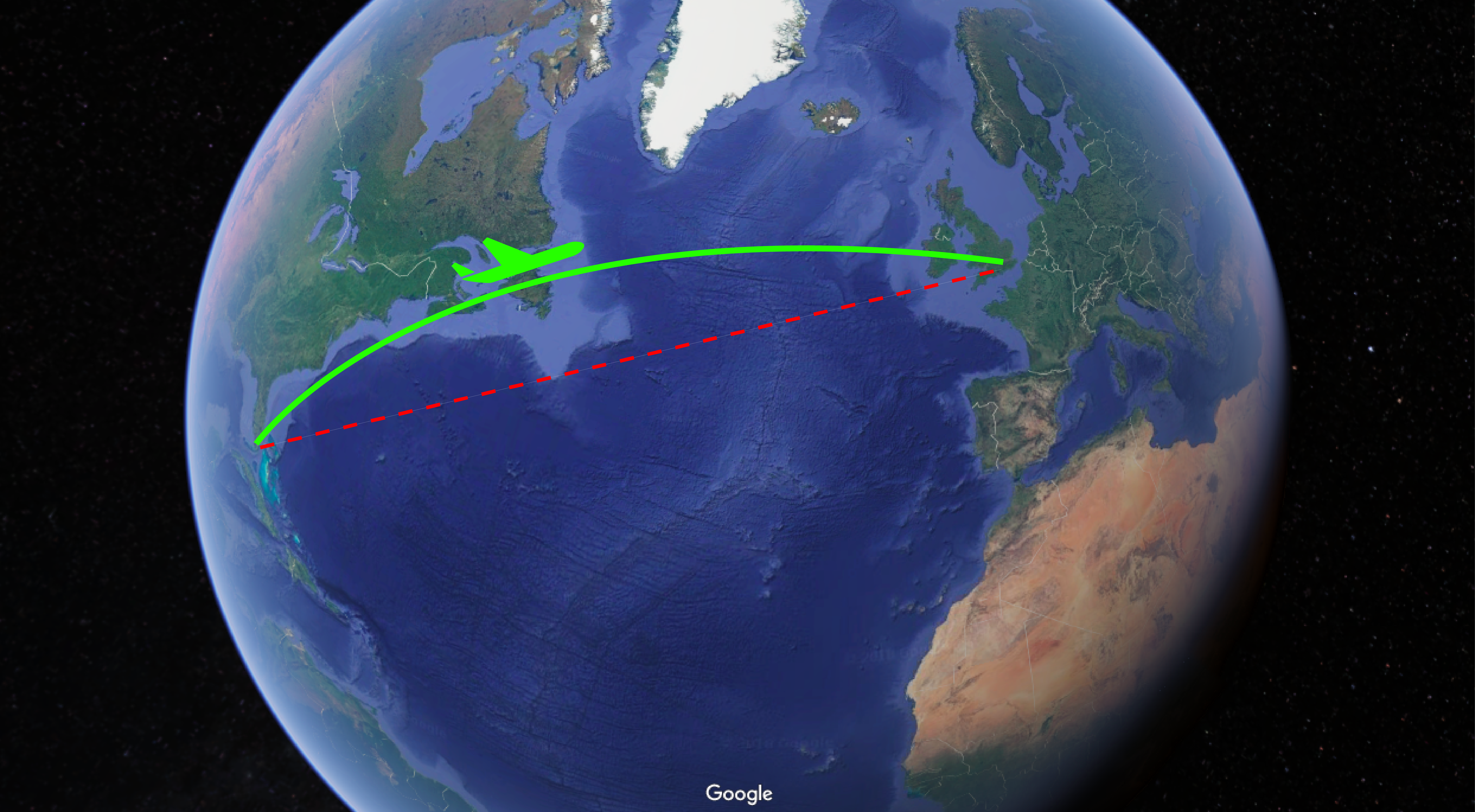I recently flew from Miami to London and to my surprise, the plane went way up north, flying near the east coast of the US, and it was only after we reached Canada that the plane was headed towards London. In other words, it didn’t follow a straight line.
My initial thought was that the plane took that route in order to remain as close as possible to the land in case of emergency. I mean, why would you otherwise not follow the shortest distance – a straight line connecting Miami to London that is.
Well, being a useless info junkie, i decided to look at it and the answer has nothing to do with emergencies. Here’s the incredibly simple explanation. (the article continues after the ad)
According to Patrick Smith’s amazing book Cockpit Confidential (Get it from Amazon), these circles are in fact, the shortest routes. This won’t make sense if you are looking at a traditional flat, 2D map but if you happen to have a globe handy, things become more obvious. If you take a piece of string and connect Miami and London with a straight line and with another piece of string connect the two cities by following the plane’s actual route, you’ll see that the shortest distance is the second one:

This is because the earth becomes distorted when crushed from its round to a horizontal state, since the divisions of longitude and latitude stretch apart. This is the same reason why people grow up believing that Greenland is 10x larger than it really is.
These routes, called “great circle routes”, are always followed between continents and if you think about it, they are basically straight lines connecting the two points but, when drawing a straight line on a globe, it appears to bend on a map.
For those interested in learning more about this, there’s even a website dedicated to great circles routes – Great Circle Mapper.
Now you know!
If you like what you read, then you will definitely love this one: If Airlines Banned Smoking, Why Do New Airplanes Still Have Ashtrays?
Photo: Great Circle Mapper
Sources: Cockpit Confidential: Everything You Need to Know About Air Travel: Questions, Answers, and Reflections



